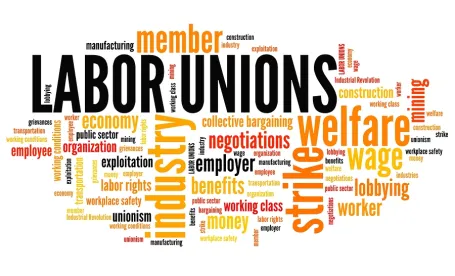The National Labor Relations Board published a Notice of Proposed Rulemaking (“NPRM”) on Monday, August 12, 2019, proposing three amendments to its current rules and regulations aimed at addressing representation election procedures – with potentially more to come. The NLRB made sweeping changes to the election procedures through rulemaking in 2014, which have been criticized as shortening the time between the filing of a petition and the election and thus not allowing ample time for information about representation to be shared with employees. The current NLRB made it known that it was likely to change these rules in 2017. The NPRM issued this week represents a start to the intended changes to the rules.
The three proposed amendments include: (1) replacing the current blocking charge policy with a vote-and-impound procedure; (2) modifying the immediate voluntary recognition bar and reinstating the Dana notice and open-period procedures; and (3) in the construction industry, requiring the showing of positive evidence of majority employee support, rather than just contractual language, in order to transition an initial Section 8(f) bargaining relationship to a Section 9(a) bargaining relationship.
The Board’s 113-page Notice of Proposed Rulemaking states that the status quo “constitute[s] an overbroad and inappropriate limitation on the ability of employees to exercise their fundamental statutory right to the timely resolution of questions concerning representation through the preferred means of a Board-conducted secret ballot election.”
The Board argued that these policy changes were far better suited to informal notice-and-comment rulemaking, as opposed to adjudication, for a number of reasons.
-
First, the Board will be better able to make an informed judgment as to the impact of the policies after receiving public comment on the issues—whereas if the issue were raised in a case, then only the parties and amici could have their voices heard.
-
Second, the Board pointed out that rulemaking, unlike adjudication, cannot be mooted by developments in a specific pending case. On this point, the Board cited to Lowshaw Thermal Technology, LLC, Case 05-CA-158650, where the Board was unable to address what level of proof should be required to establish a Section 9(a) bargaining relationship in the construction industry after the union withdrew its charge.
-
Third, the Board argued that rulemaking removes the uncertainty that the legal regime may change “on a moment’s notice (and possibly retroactively) through the adjudication process.”
Chairman Ring and Members Kaplan and Emanuel issued the proposed amendments, and Member McFerran issued a stern dissented critiquing the amendments in every respect.
The public may submit comments on the three proposed amendments for 60 days following its publication in the Federal Register on August 12, 2019.
Replacing the Blocking Charge Policy with a Vote-and-Impound Procedure
As we recently previewed here, the Board first proposes to replace the existing (and much-criticized) blocking charge policy with a vote-and-impound procedure.
The blocking charge policy permits a party (typically a union) to block an election indefinitely by filing an unfair labor practice charge. In practice, the policy allows an incumbent union to use an unfair labor practice charge to delay a decertification election. The current blocking charge policy is not set forth in the NLRB’s rules and regulations.
In comparison, a vote-and-impound procedure would allow an election to be held regardless of whether an unfair labor practice charge was pending and a blocking request had been filed. Then, if the charge has not been resolved before the election is held, the election would nevertheless be conducted and ballots would be impounded until the Board makes a final determination as to the merits of the charge. The Board stated that by avoiding unnecessary and potentially lengthy delay, the vote-and-impound procedure would better protect employees’ free choice than the current blocking charge policy.
In her dissent, Member McFerran condemned the majority for proposing to eliminate an “80-year old doctrine” and replacing it with a new policy that would “require regional directors to run – and employees, unions, and employers to participate in – elections conducted under coercive conditions that interfere with employee free choice.”
Modifying the Immediate Voluntary Recognition Bar and Reinstating Dana Rule
The second proposed amendment would modify the immediate voluntary recognition bar established in Lamons Gasket, Co., 357 NLRB 739 (2011) and return to the rule outlined in Dana Corp., 351 NLRB 434 (2007).
In Dana Corp., the Board held that employees who become represented by a union pursuant to a voluntary recognition agreement have a period of 45 days, after receiving notice, where they may reject that representation through a secret ballot election. As with the blocking charge policy, the voluntary recognition bar is not currently set forth in the NLRB’s rules and regulations.
The ruling in Dana Corp. was previously overturned by the Obama-Board in Lamons Gasket. In Lamons Gasket, the Board reinstated the immediate voluntary recognition election bar, which requires “a reasonable period” of time to pass before representation may be challenged. The Board defined “a reasonable period” of time as no less than six months, but no more than one year.
In the Notice of Proposed Rulemaking, the Board stated that “[t]his modification does not diminish the role that voluntary recognition plays in the creation of bargaining relationships but ensures that employee free choice has not been impaired by a process that is less reliable than Board elections.”
In contrast, Member McFerran argued in her dissent that the proposed amendment will discourage “the establishment of stable collective bargaining relationships by creating unnecessary procedural hurdles undermining a union that has already lawfully secured recognition.”
Requiring Positive Evidence of Majority Employee Support for Section 9(a) Recognition in the Construction Industry
Finally, the third proposed amendment would require positive evidence of majority employee support in order to convert an initial bargaining relationship under Section 8(f) to a Section 9(a) bargaining relationship in the construction industry. Thus, the proposed amendment would overturn the ruling in Staunton Fuel, 335 NLRB 717 (2001).
In Staunton Fuel, the Board held that a construction industry union could prove Section 9(a) recognition by merely executing a collective bargaining agreement with the employer. There was no requirement to provide positive evidence of majority support amongst employees beyond the language in the contract.
In the Notice of Proposed Rulemaking, the Board stated that requiring positive evidence “that a union unequivocally demanded recognition as the Section 9(a) exclusive bargaining representatives in an appropriate bargaining unit, and that the employer unequivocally accepted it as such, based on a contemporaneous showing of support from a majority of employees in an appropriate unit” will restore protections of employee free choice in the construction industry.
Member McFerran disagreed and argued in her dissent that the proposed amendment runs counter to “well-established Board law in unfair labor practice cases” and purports to solve a “non-existent problem.”
More Potential Rulemaking in the Future
It appears this is just a start. The three proposed amendments addressing union election procedures are part of a series of regulations that were announced by the Board on May 22, 2019. Other potential topics for rulemaking include the Board’s current representation-case procedures, the standard for determining whether students who perform services at private colleges or universities in connection with their studies are “employees” within the meaning of Section 2(3), and the standards for access to an employer’s private property. Stay tuned!





 />i
/>i

